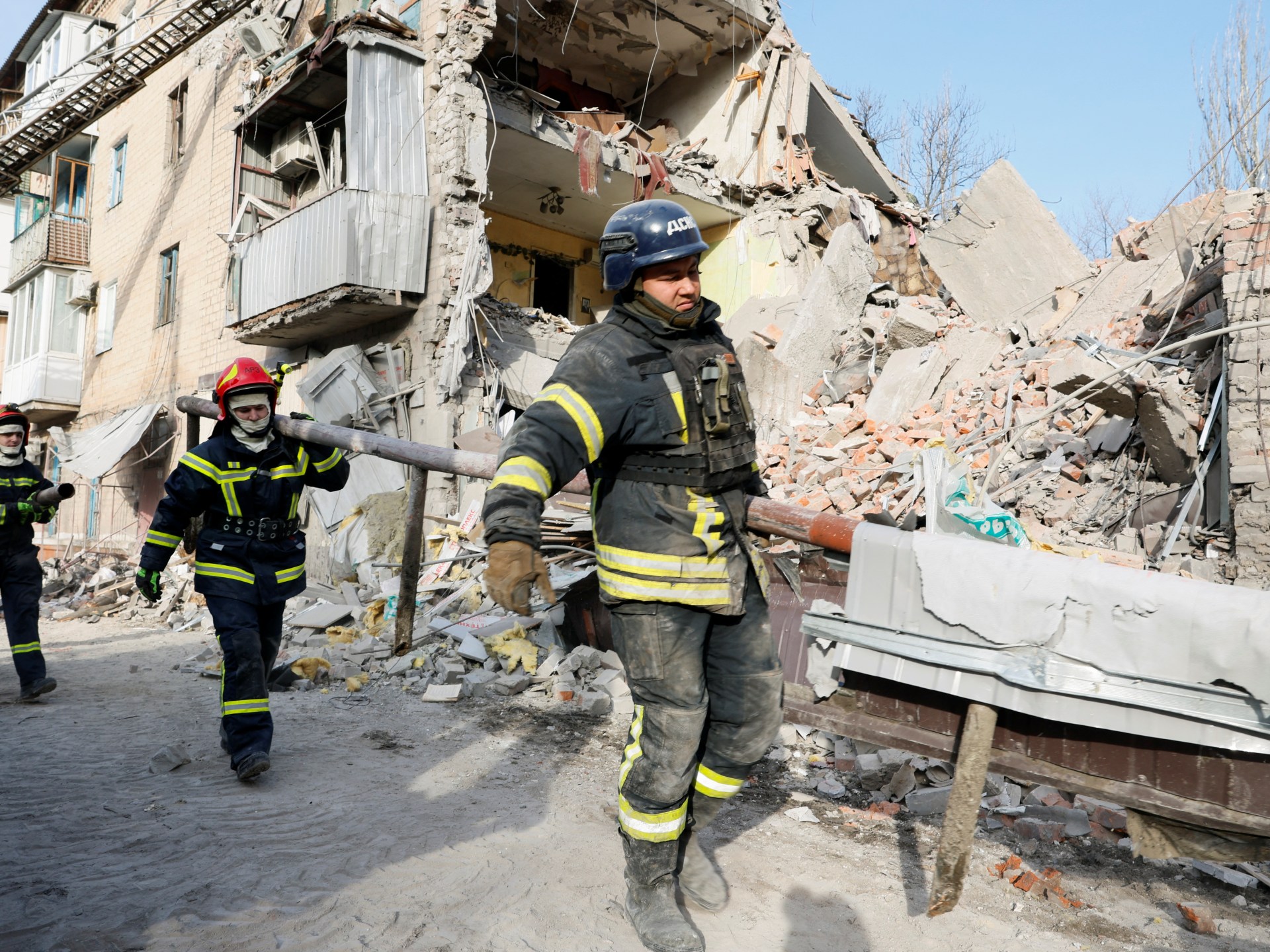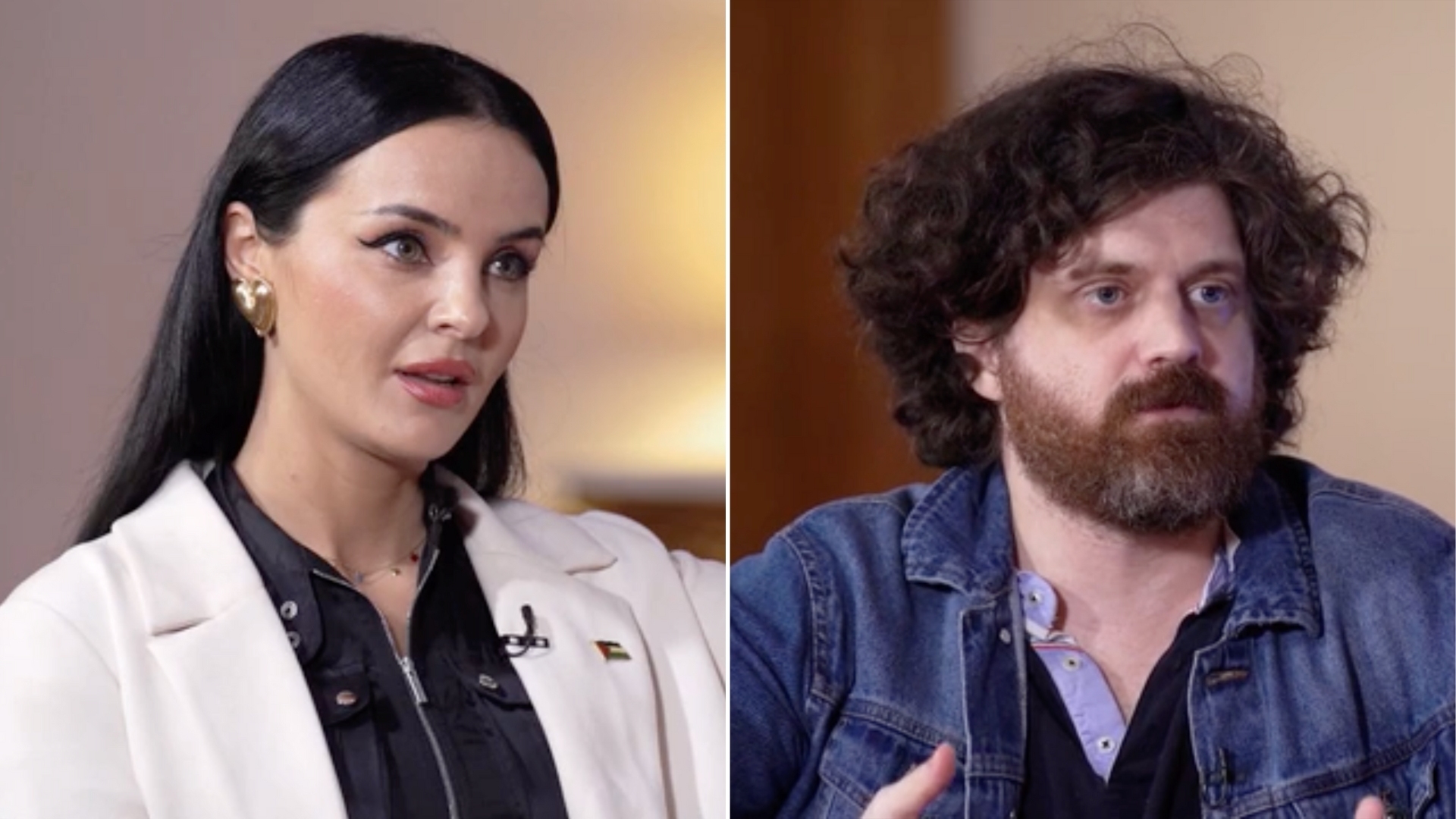Europe considers commitments to Ukraine as Russia’s war rages on
Ukraine and Russia both scored some territorial successes and flung missiles and drones at each other during the 90th week of the war, each showing little sign of abatement.
But much of the main action was in Europe’s capitals.
European Union members debated whether to grant Ukraine 20 billion euros ($22bn) in military aid and 50 billion euros ($54bn) in state and reconstruction aid over four years, and whether to invite Ukraine to start membership talks at the European summit in December.
Both actions would send a powerful message to Russia’s President Vladimir Putin that Europe’s resolve to help Ukraine has not weakened. Europe also prepared a 12th package of sanctions, making it harder for Russia to sell its oil around the world.
The United Kingdom, meanwhile, ensured that Ukrainian grain would continue to be exported through the Black Sea, by brokering an insurance agreement that lowered the cost of war risk to freighters. That cost briefly rose after Russia struck a sixth civilian cargo vessel on November 8.

The war on the ground
Ukraine built up its bridgehead on the left bank of the Dnipro river during the week, threatening Russian forces at the western extremity of the front.
Russian reporters said Ukraine advanced to new positions around Krynky, a town 20km (12 miles) east of Kherson City, on November 9. Geolocated footage confirmed the advance on November 13. The reports also said continuous Ukrainian artillery was pinning down Russian troops in towns between Krynky and Kherson City.
Ukrainian military intelligence chief Kyrylo Budanov said the armed forces were doing “everything possible to knock out the Russians from the left bank” in a statement on November 11, the first anniversary of a tactical Russian withdrawal from the territory it held in Kherson west of the river.
Two days later, Andriy Yermak, the head of Ukraine’s presidential office, said, “Against all odds, Ukraine’s Defence Forces have gained a foothold on the left bank of the Dnieper [Dnipro river].”
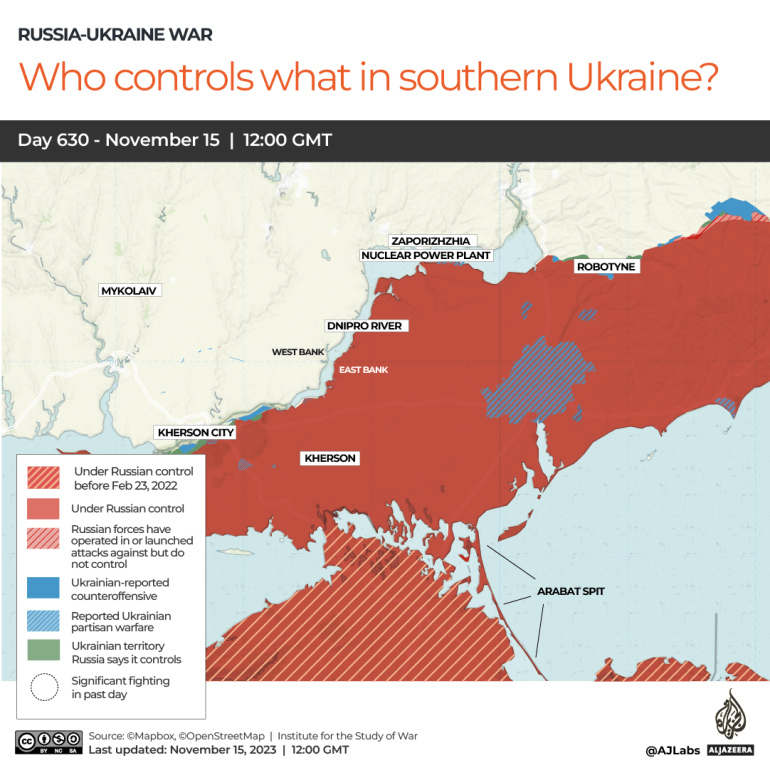
Ukrainian headway seemed to have caught Russia unprepared to communicate.
On November 9, the day of the Ukrainian advance, Russia’s military said it had thwarted Ukraine’s attempt to gain a bridgehead on the left bank, killing 500 Ukrainian servicemen in a week.
On November 13, Russia’s state TASS news agency and RIA Novosti newspaper published reports that Russia was ordering the redeployment of elements of the “Dnipro” group of forces in Kherson to “more advantageous positions”. Both withdrew the reports within minutes, issuing an apology.
Russia, too, made advances.
The General Staff of the Ukrainian Armed Forces said Russian forces launched 30 attacks north and south of Bakhmut, an unusually high number, on November 8 and 9. Geolocated footage showed they had regained control of a railway line running south of Bakhmut and advanced north of the city.
“The Russians have stepped up and are trying to recover previously lost positions” in Bakhmut, wrote Ukrainian ground forces commander Oleksandr Syrsky on Telegram.
Russia also kept up pressure on Avdiivka, the eastern city south of Bakhmut it is trying to encircle.
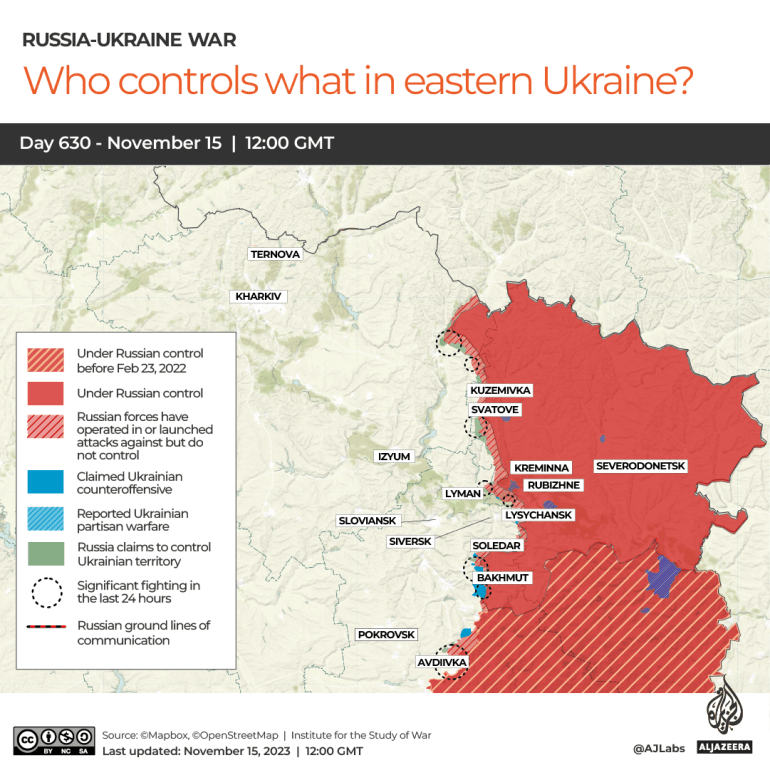
Ukraine’s military chief of staff, Valery Zaluzhny, said on November 10 that Russia had lost 10,000 men in the first month of its assault on Avdiivka.
“During this time, our soldiers destroyed more than 100 enemy tanks, 250 other armoured vehicles, about fifty artillery systems and 7 Su-25 aircraft. The enemy’s total losses in manpower amount to about 10,000 people,” he wrote on social media.
Neither Ukraine’s nor Russia’s claims of the other’s losses could be independently verified.
The war in the air
Ukraine and Russia also sparred from a distance.
Ukraine’s air force said it downed 19 out of 31 Shahed drones Russia fired off on November 10. Russia also fired a Kh-31 missile, an Onyx anti-ship missile and an S-300 air defence missile into Ukrainian territory, adopting a Ukrainian technique of using drones and missiles together to help overwhelm air defences.
Russia’s Ministry of Defence said it downed two Ukrainian drones on the same day, one near Moscow and the other near the Russian border with Belarus. Baza, a Russian Telegram channel with links to security services, suggested one was targeting a machine plant in Kolomna, 100km (62 miles) southeast of Moscow.
Ukraine has consistently asked allies for more air defence systems. On November 9, Ukraine’s deputy defence minister asked France for additional ammunition for air defence systems, and to participate in pilot training for F-16s.
That pilot training took a major step forward on November 9, when five Dutch F-16s arrived at the Fetesti Air Base in Romania for pilot training. Four days later, Ukrainian President Volodymyr Zelenskyy said F-16 pilot training had begun in a video address.
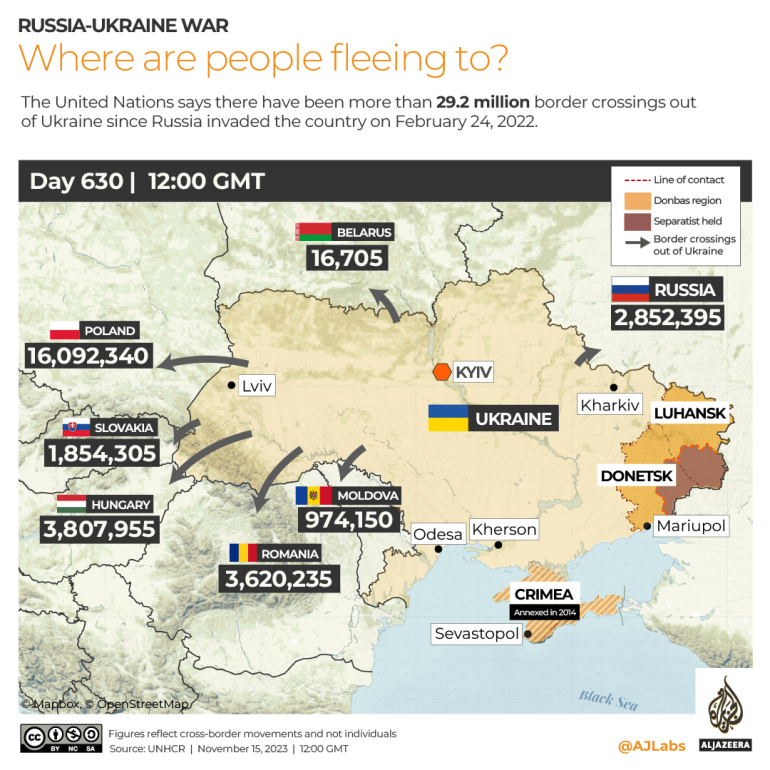
The European F-16 Training Centre (EFTC) in Fetesti is to train non-Ukrainian pilots as well.
The Netherlands is lending the EFTC 12-18 of its F-16s for training purposes, and helping coordinate the effort to provide Ukraine with its own F-16s. Ukrainian Deputy Energy Minister Farid Safarov recently told a NATO meeting that F-16s were the best way for Ukraine to defend its energy infrastructure from Russian attacks during the winter, but it was not certain how soon Ukraine would have operational F-16s.
Further sanctions
The EU was finalising a 12th package of sanctions on Russia that could be approved on Wednesday, the bloc’s foreign policy chief Josep Borrell said on Monday, November 13.
“This 12th package will include … new export bans, among them … diamonds,” Borrell told reporters, indicating there would also be “actions to tighten the oil price cap, in order to decrease the revenue that Russia is getting from selling its oil – not to us but to others – [and] fighting against circumvention”.
Days earlier, the European Parliament had called for tougher enforcement of European sanctions against Russian oil – and for an extension of those sanctions. The resolution said refined oil products from Russian oil were finding their way into the EU from India, and gas was continuing to enter the EU directly.
But the most important European contributions to Ukraine’s security could come in December. Ukraine has been lobbying for an invitation to open membership talks, and the European Commission supports that demand.
“We are working to get an unconditional decision to start negotiations,” said Zelenskyy in a November 13 video address. “It is fundamental for Ukraine to implement all the recommendations of the European Commission that were given, all seven recommendations, and to do what is necessary at this stage of our journey to the European Union.”
The EU last year said it would grant Ukraine candidate status if it passed legislation to fight corruption and money laundering, limit the influence of oligarchs, secure the integrity of the judiciary and guarantee the rights of ethnic minorities.
At the same summit, the EU is to decide on whether to approve a 50 billion-euro ($54.2bn) financial aid package for Ukraine for the period 2024-27. The European Parliament has already given a green light to the so-called “Ukraine Facility”, designed to help finance the state as it transitions to EU membership and to rebuild the country.
Separately, EU diplomats were considering a 20-billion euro ($22bn) military aid package that would commit members to spending 5 billion euros ($5.4bn) a year over four years.
EU diplomats said on November 14 that there was resistance to the package.
The EU’s foreign policy chief proposed the military budget in July. Among the sceptics was reportedly Germany, a stalwart provider of military aid to Ukraine so far, and this despite the fact that it proposed doubling its military aid to Ukraine to 8 billion euros ($8.7bn) next year.
The governing coalition had reportedly agreed to the increase and would submit it for committee discussion on November 16. “It is a strong signal to Ukraine that we will not leave them in the lurch,” German Defence Minister Boris Pistorius is quoted as having said.
Germany’s 8 billion-euro ($8.7bn) pledge came as Chancellor Olaf Scholz sought to ensure that Germany would meet a NATO defence spending minimum of 2 percent of gross domestic product (GDP) over the medium term. Germany is on track to spend 1.57 percent of GDP this year, and the 8 billion-euro ($8.7bn) pledge puts it over 2 percent for next year.

